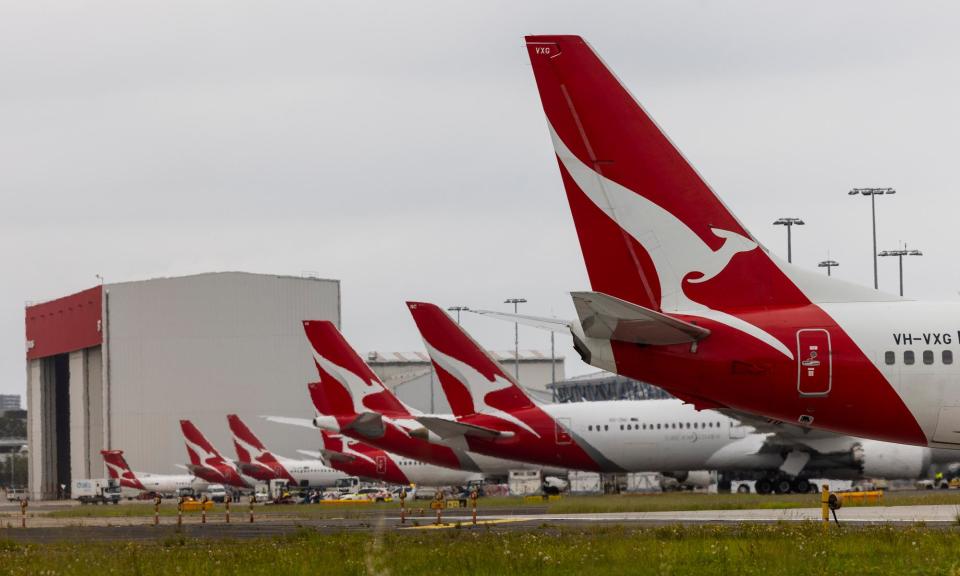Qantas announces boarding changes aimed at avoiding chaotic economy queues

Qantas is rolling out a new boarding regime that will see passengers split into six boarding groups as it seeks to fill its planes faster and to ensure they depart on time.
The new boarding protocol will initially apply only to domestic flights on Airbus A330s and Boeing 737s – the workhorses of its domestic services between capital cities.
The new system was put in place at Brisbane airport from Monday, and its introduction will be staggered throughout the month, coming into effect at Perth airport from 10 June, at Melbourne from 17 June and Sydney from 25 June.
Qantas will now split passengers into six groups in an attempt to avoid the chaotic queues that form at gates when economy is called to board.
Related: ‘This is a game-changer’: Australia, once home of glamour flying boats, eyes a seaplane revival
Premium travellers and the most loyal customers will retain superior priority. Group one will include those in business class, frequent flyers with platinum or platinum one status, as well as travellers from the exclusive chairman’s lounge. Gold frequent flyers will board as group two.
However, instead of the traditional approach where the front and back half of the plane are called to board separately, the cabin will be split into quarters.
Group three will include everyone seated in the back quarter of the plane, progressing to group six, which consists of passengers in the front quarter of economy.
Each passenger’s group will be printed on their boarding pass, with scanners at the gate only permitting customers of a group already called to pass through.
The new system is intended to speed up boarding and minimise congestion throughout the cabin as travellers in back rows are forced to wait while those in earlier rows stand to load luggage into overhead lockers or shuffle between seats.
The Qantas domestic chief executive, Markus Svensson, said the change was the most significant change to boarding in a decade.
Related: Qantas frequent flyer changes: how does the revamped system work and who benefits?
“Group Boarding is designed to minimise the time our customers spend waiting to board and allows them to get settled more quickly,” Svensson said. “We know how important on time departure is to our customers, so this process is also about doing everything possible to ensure we depart on time.”
Qantas noted similar boarding methods had already been implemented by rivals overseas.
The airline’s approach is in contrast to US carrier United Airlines, which last year announced it would board economy passengers by their seat, not just their row, as part of its multi group boarding stages.
On United flights, window seat passengers board first, followed by those with middle seats, before aisle seat travellers board. The system is designed to minimise traffic in the cabin aisles by avoiding the need for already seated passengers to get up to allow a window seat passenger in. United believes its approach cuts its boarding times by two minutes a flight.

 Yahoo Finance
Yahoo Finance 